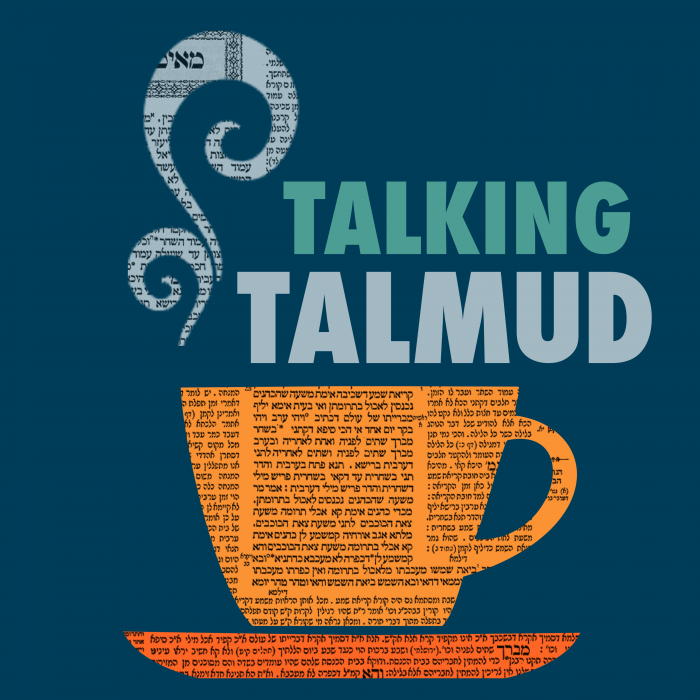Shevuot 8
גִּילּוּי עֲרָיוֹת נָמֵי, הֵיכִי דָמֵי? אִי בְּמֵזִיד – בַּר קְטָלָא הוּא! אִי בְּשׁוֹגֵג – בַּר קׇרְבָּן הוּא!
The Gemara asks further: With regard to forbidden sexual relations, for which one might have thought the goat offering would atone as well, what are the circumstances? If you say the reference is to a case where he transgressed intentionally, then one can counter that he is subject to the death penalty and so no offering will atone for his sin. And if you say the reference is to a case where he transgressed unwittingly, then one can counter that he is liable to bring his own sin-offering for his transgression, and so the goat will not atone for him.
בְּמֵזִיד – וְלָא אַתְרוֹ בֵּיהּ, בְּשׁוֹגֵג – וְלָא אִתְיְדַע לֵיהּ.
The Gemara answers: The goat offering atones in a case where he transgressed intentionally but witnesses did not forewarn him about his transgression, so he is not liable to receive the death penalty. It also atones in a case where he transgressed unwittingly, but by the time Yom Kippur arrived he had still not become aware of his transgression, so he was not liable to bring an offering.
שְׁפִיכוּת דָּמִים נָמֵי, הֵיכִי דָּמֵי? אִי בְּמֵזִיד – בַּר קְטָלָא הוּא! אִי בְּשׁוֹגֵג – בַּר גָּלוּת הוּא!
The Gemara asks further: Concerning the bloodshed for which one might have thought that the goat would atone as well, what are the circumstances? If you say the reference is to a case where he transgressed intentionally, then one can counter that he is subject to the death penalty, so no offering will atone for his sin. And if you say the reference is to a case where he transgressed unwittingly, then one can counter that he is subject to go into exile, so the goat offering will not atone for him.
בְּמֵזִיד – וְלָא אַתְרוֹ בֵּיהּ, בְּשׁוֹגֵג – וְלָא אִתְיְדַע לֵיהּ. אִי נָמֵי, בְּהָנָךְ דְּלָאו בְּנֵי גָלוּת נִינְהוּ.
The Gemara answers: The goat offering atones in a case where he transgressed intentionally but witnesses did not forewarn him about his transgression, and so he is not liable to receive the death penalty. It also atones in a case where he transgressed unwittingly, but by the time Yom Kippur arrived he had still not become aware of his transgression, so he was not liable to bring an offering. Alternatively, it is referring to those cases for which the perpetrator is not subject to exile, e.g., where the death was caused in a way that was almost unavoidable, or where it was very close to being considered intentional.
אָמַר מָר: יָכוֹל עַל שָׁלֹשׁ טְומָאוֹת הַלָּלוּ יְהֵא שָׂעִיר מְכַפֵּר? תַּלְמוּד לוֹמַר: ״מִטֻּמְאוֹת״ – וְלֹא כׇּל טוּמְאוֹת; מָה מָצִינוּ שֶׁחָלַק הַכָּתוּב מִכְּלָל כׇּל הַטְּומָאוֹת – בְּטוּמְאַת מִקְדָּשׁ וְקָדָשָׁיו; אַף כָּאן – בְּטוּמְאַת מִקְדָּשׁ וְקָדָשָׁיו. דִּבְרֵי רַבִּי יְהוּדָה.
§ The Gemara continues to analyze the next part of the baraita: The Master said: One might have thought that the goat offering would atone for these three types of impurities. To counter this, the verse states: “From the impurities of the children of Israel” (Leviticus 16:16). The restrictive term “from” indicates that it atones for some impurities but not for all impurities. What do we find is the impurity that the verse differentiates from all other impurities? We find it with regard to the defiling of the Temple or its sacrificial foods. It is specifically for this transgression that the Torah provides one with the means of achieving atonement, i.e., by bringing a sliding-scale offering. So too here, since the verse limits the atonement of the goat offering to transgressions involving impurity, it is logical that it can also atone only for the defiling of the Temple or its sacrificial foods. This is the statement of Rabbi Yehuda.
מַאי חָלַק? דְּמַיְיתֵי בְּעוֹלֶה וְיוֹרֵד. אֵימָא עֲבוֹדָה זָרָה, וּמַאי חָלַק –
The Gemara asks: In what way does the Torah differentiate the impurity of this transgression from other types of transgressions? It is differentiated in that one brings a sliding-scale offering to atone for it. But if that is a sufficient distinction, then say instead that the goat offering atones for idol worship, and in what way does the Torah differentiate it from other types of transgressions?
(סִימַן: עֲבוֹדָה זָרָה, יוֹלֶדֶת, מְצוֹרָע, נָזִיר וְכוּ׳)
Before answering, the Gemara interjects with a mnemonic that summarizes which cases it will suggest the goat offering should atone for: Idol worship, a woman after childbirth, a leper, a nazirite, etc.
דְּמַיְיתֵי שְׂעִירָה וְלֹא כִּשְׂבָּה!
The Gemara returns to answer its question: It is differentiated in that he brings a she-goat as a sin-offering and not an ewe, which is the animal brought as a sin-offering for other transgressions.
אָמַר רַב כָּהֲנָא: אֲנַן חָלַק לְהָקֵל קָאָמְרִינַן, וְהַאי חָלַק לְהַחְמִיר הוּא.
Rav Kahana said: We said that the goat offering should atone for a transgression that the Torah differentiates in order to be lenient relative to other transgressions, but this case of idol worship is one that the Torah differentiates in order to be stringent relative to other transgressions. Accordingly, the verse cannot be referring to idol worship.
אֵימָא יוֹלֶדֶת – דְּחָלַק, דְּמַיְיתָא עוֹלֶה וְיוֹרֵד! אָמַר רַב הוֹשַׁעְיָא: ״לְכׇל חַטֹּאתָם״ – וְלֹא לְכׇל טוּמְאֹתָם.
The Gemara asks: Why not say instead that the goat offering atones for a woman after childbirth, as the Torah differentiates her from other people who must bring a sin-offering following a period of impurity in that she brings a sliding-scale offering, whereas others bring a fixed sin-offering? Rav Hoshaya said: The verse states: “For all their sins” (Leviticus 16:16), and not: For all their impurities. Accordingly, since the offering brought by a woman after childbirth is not to atone for a sin, but due to the fact that she went through a period of ritual impurity, the goat offering will not atone for her.
וּלְרַבִּי שִׁמְעוֹן בֶּן יוֹחַאי דְּאָמַר יוֹלֶדֶת נָמֵי חוֹטֵאת הִיא, מַאי אִיכָּא לְמֵימַר? רַבִּי שִׁמְעוֹן לְטַעְמֵיהּ, דְּאָמַר: מִמְּקוֹמוֹ הוּא מוּכְרָע.
The Gemara asks: But if so, according to Rabbi Shimon ben Yoḥai, who says: A woman after childbirth brings an offering because she is also a sinner, what is there to say? Under the intense pain of childbirth a woman is apt to take an oath not to engage in intercourse in order to avoid becoming pregnant again. This is regarded as a sin because she will certainly violate that oath. The Gemara answers: Rabbi Shimon conforms to his line of reasoning, as he said in the baraita: From its own place, i.e., from the verse about the atonement of the goat offering itself, it can be determined what the goat offering atones for.
אֵימָא מְצוֹרָע! אָמַר רַב הוֹשַׁעְיָא: ״לְכׇל חַטֹּאתָם״ – וְלֹא לְכׇל טוּמְאֹתָם.
The Gemara asks: Why not say that the goat offering atones for a leper, as the Torah differentiates him from other people who must bring a fixed offering following a period of impurity in that he brings a sliding-scale offering? Rav Hoshaya said: The verse states: “For all their sins” and not: For all their impurities. Accordingly, since the offering brought by a leper is not to atone for a sin, the goat offering will not atone for him.
וּלְרַבִּי שְׁמוּאֵל בַּר נַחְמָנִי, דְּאָמַר: עַל שִׁבְעָה דְּבָרִים נְגָעִים בָּאִין – מַאי אִיכָּא לְמֵימַר? הָתָם נִגְעֵיהּ דְּאִכַּפַּר לֵיהּ, וְקׇרְבָּן לְאִישְׁתְּרוֹיֵי בַּקָּהָל.
The Gemara asks: But if so, according to Rabbi Shmuel bar Naḥmani, who says: Leprous marks come upon a person for seven matters, i.e., seven different sins, what is there to say? The Gemara answers: There, it is his leprous mark that atones for his sin, and the offering is brought in order to permit him to reenter the congregation, after having been ostracized while he was a leper.
וְאֵימָא נָזִיר טָמֵא – דְּחָלַק, דְּמַיְיתֵי תּוֹרִים וּבְנֵי יוֹנָה! אָמַר רַב הוֹשַׁעְיָא: ״לְכׇל חַטֹּאתָם״ – וְלֹא לְכׇל טוּמְאֹתָם.
The Gemara asks: But why not say that the goat offering atones for a nazirite who became ritually impure, as the Torah differentiates him from other people who must bring an offering following a period of impurity in that he brings doves or young pigeons? Rav Hoshaya said: The verse states: “For all their sins” and not: For all their impurities. Accordingly, since the offering brought by a nazirite is not to atone for a sin, the goat offering will not atone for him.
וּלְרַבִּי אֶלְעָזָר הַקַּפָּר, דְּאָמַר נָזִיר נָמֵי חוֹטֵא הוּא, מַאי אִיכָּא לְמֵימַר? סָבַר לַהּ כְּרַבִּי שִׁמְעוֹן, דְּאָמַר: מִמְּקוֹמוֹ הוּא מוּכְרָע.
The Gemara asks: But if so, according to Rabbi Elazar HaKappar, who says: A nazirite is also a sinner because he unnecessarily abstained from wine, what is there to say? The Gemara answers: He holds in accordance with the opinion of Rabbi Shimon, who says in the baraita: From its own place, i.e., from the verse about the atonement of the goat itself, it can be determined what the goat offering atones for.
אָמַר מָר, רַבִּי שִׁמְעוֹן אוֹמֵר: מִמְּקוֹמוֹ הוּא מוּכְרָע; הֲרֵי הוּא אוֹמֵר: ״וְכִפֶּר עַל הַקֹּדֶשׁ מִטֻּמְאוֹת״ – מִטּוּמְאָתוֹ שֶׁל קוֹדֶשׁ כּוּ׳. שַׁפִּיר קָאָמַר רַבִּי שִׁמְעוֹן! וְרַבִּי יְהוּדָה אָמַר לָךְ: הַהוּא מִיבְּעֵי לֵיהּ – כִּי הֵיכִי דְּעָבֵיד לִפְנַי וְלִפְנִים, הָכִי נַעֲבֵיד בַּהֵיכָל.
§ The Gemara continues to clarify the next part of the baraita: The Master said: Rabbi Shimon says: It is not necessary to derive which transgressions the goat offering atones for by comparing the verse written concerning it to a different verse. Rather, from its own place, i.e., from the verse about the atonement effected by the goat itself, it can be determined, as it states: “And he shall effect atonement upon the Sanctuary [hakodesh] from the impurities of the children of Israel,” which should be interpreted as saying that it atones for the defiling of anything sacred [kodesh], i.e., the Temple or its sacrificial foods. The Gemara explains Rabbi Yehuda’s opinion, asking: Rabbi Shimon is saying well; why does Rabbi Yehuda disagree? The Gemara answers: Rabbi Yehuda could have said to you: That verse is necessary to teach that in the same manner that he performs the blood presentation in the innermost sanctum, i.e., in the Holy of Holies, that is how he shall later perform them in the Sanctuary.
וְרַבִּי שִׁמְעוֹן – הַהוּא מִ״וְּכֵן יַעֲשֶׂה״ נָפְקָא. וְרַבִּי יְהוּדָה – אִי מֵהַהִיא, הֲוָה אָמֵינָא נַיְתֵי פַּר וְשָׂעִיר אַחֲרִינֵי וְנַעֲבֵיד; קָא מַשְׁמַע לַן. וְרַבִּי שִׁמְעוֹן, ״וְכֵן יַעֲשֶׂה לְאֹהֶל מוֹעֵד״ – מִינֵּיהּ מַשְׁמַע.
The Gemara asks: And how does Rabbi Shimon derive that halakha? That halakha is derived from the continuation of the verse: “And so shall he do to the Tent of Meeting,” i.e., the Sanctuary. The Gemara asks: And what does Rabbi Yehuda derive from that part of the verse? The Gemara explains: He holds that if this halakha would be derived only from that part of the verse, I would say that he should bring another bull and goat, slaughter them, and perform the blood presentations in the Sanctuary with their blood. Therefore, the first part of verse: “And he shall effect atonement upon the Sanctuary,” teaches us that all the presentations are made with blood from the same bull and goat. The Gemara asks: And why does Rabbi Shimon not need the first part of the verse to derive this? The Gemara explains that the verse: “And so shall he do to the Tent of Meeting,” itself indicates that the blood used in the Tent of Meeting, i.e., in the Sanctuary, is from the same bull and goat.
אָמַר מָר: יָכוֹל עַל כׇּל טוּמְאוֹת שֶׁבַּקּוֹדֶשׁ יְהֵא שָׂעִיר זֶה מְכַפֵּר? תַּלְמוּד לוֹמַר: ״מִפִּשְׁעֵיהֶם לְכׇל חַטֹּאתָם וְגוֹ׳״. מַאי נִיהוּ – יֵשׁ בָּהּ יְדִיעָה בַּתְּחִלָּה וְיֵשׁ בָּהּ יְדִיעָה בַּסּוֹף; הַאי בַּר קׇרְבָּן הוּא!
§ The Gemara cites the next part of the baraita: The Master said: One might have thought that this goat offering would atone for all cases of the defiling of the Temple, even where there was awareness at the beginning and at the end. To counter this, the verse states: “And from their acts of rebellion, for all their sins” (Leviticus 16:16), which indicates that the goat offering atones only for transgressions with regard to which the perpetrator is not subject to bring an offering brought by an individual to atone for himself. The Gemara asks: What is the case for which the goat offering does not atone? Where one had awareness at the beginning and had awareness at the end. The Gemara objects: But the person in that case is subject to atonement through an offering. If so, even without this verse it would be obvious that the goat offering would not atone for him and absolve him from his obligation to bring an offering.
לָא צְרִיכָא, דְּאִתְיְדַע לֵיהּ סָמוּךְ לִשְׁקִיעַת הַחַמָּה. סָלְקָא דַּעְתָּךְ אָמֵינָא: אַדְּמַיְיתֵי
The Gemara explains: No, the verse is necessary to teach that the goat does not atone for him in a case in which he became aware of his transgression close to sunset before the onset of Yom Kippur and was unable to bring his offering before Yom Kippur. In such a case it might enter your mind to say that until he brings his sliding-scale offering the day after Yom Kippur,
נִיתְלֵי לֵיהּ, קָא מַשְׁמַע לַן.
the goat would suspend any punishment that he deserved. Therefore, the verse teaches us that since the transgression is of a type that is subject to an offering brought by an individual, the goat does not effect any atonement for it.
אָמַר מָר: מִנַּיִן שֶׁיֵּשׁ בָּהּ יְדִיעָה בַּתְּחִלָּה וְאֵין בָּהּ יְדִיעָה בַּסּוֹף שֶׁשָּׂעִיר זֶה תּוֹלֶה? מִנַּיִן?! מַאי קָא קַשְׁיָא לֵיהּ?
§ The Gemara cites the next part of the baraita: The Master said: From where is it derived that if a person had awareness at the beginning but did not have awareness at the end, that this goat suspends the punishment that he deserved until he becomes aware of his transgression? The Gemara challenges: Why does the baraita ask: From where is it derived? What is it that the baraita finds difficult about this that it searches for a proof for it?
הָכִי קָא קַשְׁיָא לֵיהּ: הַשְׁתָּא דְּאָמְרַתְּ חֲטָאִים דּוּמְיָא דִּפְשָׁעִים – מָה פְּשָׁעִים דְּלָאו בְּנֵי קׇרְבָּן, אַף חַטָּאִים נָמֵי דְּלָאו בְּנֵי קׇרְבָּן; אֵימָא: מָה פְּשָׁעִים דְּלָאו בְּנֵי קׇרְבָּן לְעוֹלָם, אַף חַטָּאִים דְּלָאו בְּנֵי קׇרְבָּן לְעוֹלָם; וּמַאי נִינְהוּ – אִין בָּהּ יְדִיעָה בַּתְּחִלָּה וְיֵשׁ בָּהּ יְדִיעָה בַּסּוֹף; אֲבָל יֵשׁ בָּהּ יְדִיעָה בַּתְּחִלָּה וְאֵין בָּהּ יְדִיעָה בַּסּוֹף, כֵּיוָן דְּכִי מִתְיְדַע לֵיהּ בַּר קׇרְבָּן הוּא – אֵימָא לָא לִיתְלֵי!
The Gemara explains: This is what the baraita finds difficult: Now that you have said that the goat atones only for sins that are similar to acts of rebellion, such that just as it atones for acts of rebellion that are not subject to atonement through an offering, so too, it atones only for sins that are not subject to atonement through an offering, why not compare them in a more restrictive manner and say: Just as it atones only for acts of rebellion that are never subject to atonement through an offering, so too, it atones, or suspends punishment, only for sins that are never and will never be subject to atonement through an offering? And what types of transgressions are they? They are in cases where one did not have awareness at the beginning but did have awareness at the end. But where he had awareness at the beginning but did not have awareness at the end, since when he becomes aware, he is subject to an offering, one could say that the goat will not even suspend his punishment.
וְכִי תֵימָא: אֵין בָּהּ יְדִיעָה בַּתְּחִלָּה וְיֵשׁ בָּהּ יְדִיעָה בַּסּוֹף – שָׂעִיר הַנַּעֲשֶׂה בַּחוּץ וְיוֹם הַכִּפּוּרִים מְכַפֵּר;
And if you would say that the comparison should not be understood in this way, because for one who did not have awareness at the beginning but did have awareness at the end, the goat whose blood presentation is performed outside the Sanctuary and Yom Kippur itself atone, that is difficult. If atonement is achieved through them, it is unnecessary for the verse to teach that atonement is not effected by the internal goat. Perforce, the comparison must be understood as the baraita presents it. What then is the difficulty of the baraita?
סָלְקָא דַּעְתָּךְ אָמֵינָא נֵיפוֹךְ מֵיפָךְ, אָמַר קְרָא ״לְכׇל חַטֹּאתָם״ – מִכְּלָל דִּבְנֵי חַטָּאוֹת נִינְהוּ.
The Gemara explains: It could enter your mind to say that we should reverse our conclusions about which offering atones for which type of transgression. In other words, one could say that the internal goat atones for the sin of one who did not have awareness at the beginning and the external goat atones for the sin of one who did have awareness at the beginning. If so, the comparison could be fully extended, as the Gemara suggested, and accordingly one could have thought that the internal goat would not atone for one who had awareness at the beginning. To counter this, the verse states: “For all their sins,” which indicates by inference that the internal goat atones only for those who are potentially liable to bring a sin-offering, i.e., the sliding-scale offering, should they become aware of their sin.
וְנִתְכַּפַּר [וּנְכַפַּר] כַּפָּרָה גְּמוּרָה! אִי כְּתִיב ״מֵחַטֹּאתָם״ – כִּדְקָא אָמְרַתְּ, הַשְׁתָּא דִּכְתִיב ״לְכׇל חַטֹּאתָם״ – לְהָנָךְ דְּאָתוּ לִכְלַל חַטָּאת.
The Gemara challenges: But let one who is still not aware of his transgression achieve complete atonement, so that even should he later become aware of his transgression, he will not have to bring an offering. Why does the baraita say that the goat only suspends the punishment? The Gemara answers: If it were written: From their sins, it would be interpreted as you say, but now that it is written: “For all their sins,” this indicates that it is referring to those sins whose commission will potentially cause the transgressor to become subject to an obligation to bring a sin-offering.
וְכִי מֵאַחַר שֶׁאֵינוֹ מְכַפֵּר, לָמָּה תּוֹלֶה? אָמַר רַבִּי זֵירָא: לוֹמַר שֶׁאִם מֵת – מֵת בְּלֹא עָוֹן. אָמַר לֵיהּ רָבָא: אִם מֵת – מִיתָה מְמָרֶקֶת! אֶלָּא אָמַר רָבָא: לְהָגֵן עָלָיו מִן הַיִּסּוּרִין.
The Gemara asks: But once it has been determined that the goat does not effect complete atonement, to what end does it suspend punishment? Rabbi Zeira said: The baraita means to say that if he dies before he brings his offering, he dies without liability for sin. Rava said to him: If he dies, he does not need the offering to atone for him, since death itself cleanses him of all his sins. Rather, Rava said there is a different explanation: The baraita means to say that the goat serves to protect him from being punished with suffering before he has brought his offering.
אֵין בָּהּ יְדִיעָה בַּתְּחִלָּה וְיֵשׁ בָּהּ יְדִיעָה בַּסּוֹף – שָׂעִיר הַנַּעֲשֶׂה בַּחוּץ וְיוֹם הַכִּפּוּרִים מְכַפֵּר כּוּ׳.
§ The mishna teaches: For cases in which one did not have awareness at the beginning but had awareness at the end, the goat whose blood presentation is performed outside the Sanctuary, i.e., the goat of the additional offerings of Yom Kippur, and Yom Kippur itself, atone. This is derived from the fact that the Torah juxtaposes the internal and external goats to teach that both atone only for cases in which one had awareness of his transgression at some point, although each offering atones in a different case.
מִכְּדֵי אִיתַּקּוֹשֵׁי אִיתַּקּוּשׁ לַהֲדָדֵי, וּנְכַפַּר פְּנִימִי אַדִּידֵיהּ וְאַדְּחִיצוֹן – וְנָפְקָא מִינַּהּ לְהֵיכָא דְּלָא עֲבַד חִיצוֹן! אָמַר קְרָא: ״אַחַת״ – כַּפָּרָה אַחַת מְכַפֵּר, וְאֵינוֹ מְכַפֵּר שְׁתֵּי כַּפָּרוֹת.
The Gemara comments: Now, the verse juxtaposes the two goats with each other to teach that they effect atonement for similar cases. But then let the internal goat atone both for itself, i.e., for the cases that it normally atones for, and for that which the external goat normally atones for, and the practical difference will be in a case where, for some reason, the service of the external goat was not performed. The Gemara explains: The verse states: “Aaron shall bring atonement upon its corners once a year; with the blood of the sin-offering of atonement once in the year shall he make atonement for it throughout your generations” (Exodus 30:10). The emphasis of the repeated term “once” teaches that the goat effects one atonement for only one case but cannot effect two atonements for two different cases.
וּנְכַפַּר חִיצוֹן אַדִּידֵיהּ, וְאַמַּאי דְּעָבֵיד פְּנִימִי – נָפְקָא מִינַּהּ לְטוּמְאָה דְּאֵירְעָה בֵּין זֶה לְזֶה! אָמַר קְרָא: ״אַחַת בַּשָּׁנָה״ – כַּפָּרָה זוֹ לֹא תְּהֵא
The Gemara challenges: But then let the external goat atone both for itself, i.e., for the cases that it normally atones for, and for that which the internal goat normally does atone for, and the practical difference will be in a case of the defiling of the Temple or sacrificial foods that occurred between the offering of this goat and that goat. If it occurs after the internal goat’s blood presentation, then the external goat will effect atonement for it. The Gemara explains: The verse states: “Aaron shall bring atonement upon its corners once a year” (Exodus 30:10). The emphasis on the term “once a year” teaches that this atonement, for the specific case that it atones for, should be





















